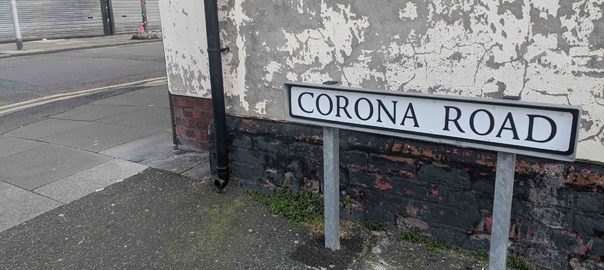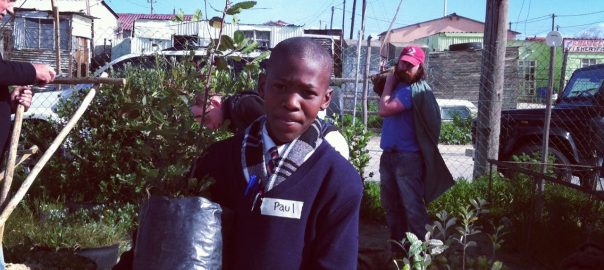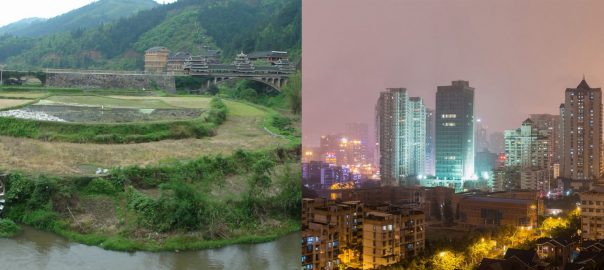Future cities have to be re-imagined from dystopian and polluted landscapes of chaotic aggregation where people try to scrape a living, to healthy human habitats where all life can co-exist and thrive.
Physical and social distancing stormed upon every one of us. Some of you received it as a suggestion, some more like an imposition. Yet, the result was more or less the same. We stopped. We had to change our plans, cancel concerts, football matches, work meetings, and stay put. At home. Some of us immediately started home renovation projects, but after pairing all socks and cleaning all corners of the kitchen the lockdown forced us to look beyond the walls of our houses and apartments. Our bigger “home”. The landscape where our houses are. And we didn’t necessarily like what we saw.
For most of us, home is a city. The habitats in which human animals roam and prowl are rather small urban landscapes. These places, so different from each other in terms of buildings, culture, smell, size, and weather, are all human-dominated landscapes. They are products of humans’ desires, planning, and ingenuity, and they have something else in common. They are polluted (Mayer 1999), stressful (Hartig and Kahn 2016), and unhealthy (Engemann et al. 2019).
With one-third of the world in lockdown not using cars the way people usually do, with air traffic down, and polluting factories closed, many urban citizens across the planet noticed a cleaner background to the buildings. The difficult time of lockdown has produced a silver lining, the deadly air pollution had mostly gone (He, Pan, and Tanaka 2020). The sight of turquoise rivers and clear skies in cities are stark reminders that our everyday habitat would be better clean. Cities do not need to be detrimental to our health and wellbeing. Rather the opposite. Experiencing a different normality for our cities is a precious moment of awakening that has to be used to act in favour of our common future. With increased awareness and motivation we can change the desires that guide the design of the human habitats to improve our and our biosphere’s wellbeing.
Five realizations about city life
There are five realizations about urban life that emerged from experiencing a lockdown in cities. The first realization is that cities are not inherently polluted, but it is human activities that make them so. Pre-COVID-19 levels of air, noise, and environmental pollution do not need to be accepted as normal urban standards any longer. The internet went berserk when they saw videos of dolphins in the canals of Venice; which in truth were in Sardinia, but still, Venetians haven’t seen through their canal waters in centuries. We saw the majesty of the Taj Mahal not hidden behind a blanket of car and industry fumes. The melodies of nature noises were no longer masked by the cacophony of traffic. Even if we had to look at these positive changes through a screen or our the windows of our apartment, we liked what we saw, and it made most of us realise that we would like to keep it that way. The human habitat does not need to be harmful to us nor any other living beings. It is a design choice. It is a design choice to plan for everyday commuting distances that cannot be covered by bicycle or foot. It is a design and political choice to allow industries to economically thrive despite contributing to air and water pollution. It is a design choice to not have the possibility to hear birds in cities. All these choices can be changed.
The second realization is that in times of physical distancing—and in times when indoor recreation is almost entirely banned—being close to a green area is more than ever a luxury. The company of plants, green space and non-human life is a welcome healing treat for both body and mind that people across the world love to dive into. In Sweden, where the government opted for a soft lockdown with voluntary restrictions, the use of parks and outdoor areas in the last months has increased up to 350 percent. This trend is valid for most countries around the world. Urban green areas allow us to socialize with people while maintaining physical distance, to maintain a sense of community (Jennings and Bamkole 2019), to relieve from ordinary and extraordinary stresses, and to find much needed psychological balance (Hartig and Kahn 2016). The benefits of nature interaction for the human mind and body are so well-established that nature experiences are now prescribed by doctors and discussed in academia in “doses” (Cox et al. 2018). Not having access to green areas in cities is another design choice. Yet, the public health costs of underexposure to nature has been grossly underestimated. Now that we might have experienced directly a glimpse of what of these benefits could be, we might decide to not accept the personal and social costs of this choice any longer.
The third realization is that even if we live in a city we can survive without over-consuming. Through advertisement, cities are constant reminders that we should shop more, own more, buy new. Still, in this time of pause, we have become to realize that talking to a person gives us more pleasure than swiping a credit card. The short-lived, addictive, and environmentally destructive joy of recreational or compulsive shopping does not support us in times of crises. The obsession for brand new objects is vanishing and the extensive use of public spaces advertising our “needs” is now just an obsolete message unsuitable for our everyday happiness. Choosing to define the living fulcrum of cities with high streets and financial centres, rather than squares and parks are decisions that do not reflect the priorities of people’s needs or priorities. These choices too should be questioned for our own and our biosphere’s wellbeing.
The fourth realization is that—although COVID-19 has affected everyone—some suffer more than others. Those already exposed to higher levels of air pollution, with less access to health care, or in low-income neighbourhoods are suffering more the effects of this pandemic. Those in lockdown without access to a private garden, without a balcony, without an escape from the indoor confinement, or without a home altogether are not doing as well as those with an undisturbed view over the beach. COVID-19 has amplified existing injustices and highlighted how health care, green areas, and public services are unequally distributed in cities. These inequalities are landscaped and built in long-lasting cement. Deciding who get access to what is too is a design choice that can be changed.
The last realization is that we like to see a thriving nature living where we live. During the lockdown we saw coyotes, wild boars, deer, and even a sea lion roaming peacefully in city centres. These sights were not alarming, but welcome. We have an appreciation for animals and natural features that goes beyond puppies and cat videos. Observing nature is a joy that derives from spending hundreds of thousands of years together (Kellert and Wilson 1993). The whole biosphere is a close evolutionary family that include us humans. Our habitat should be designed as a constant reminder of this eternal bond. Some non-human species already thrive in cities, but this is mostly because we have destroyed their natural habitats and the concrete jungle is the last place to spawn. If it wasn’t because of personal economic gains, cities might not be the first choice to live for human beings either. Separating ourselves from other inhabitants of the biosphere is mostly the product of a self-granted position of superiority over the rest of nature. Isolating the natural habitats from the human habitat means hiding that social and ecological dynamics depend on each other and co-evolve together. The upcoming climate and the ecological crisis is a clear reminder that the arbitrary decision to separate human’s and biosphere’s wellbeing is not doing us any favour on the long-term. Embedding this relationship with nature in the landscape by separating human and natural habitats is also a design choice. One which might simultaneously hamper humans’ and animals’ wellbeing. This too we saw during the lockdown.
The next “normal” human habitat
How should your city be? “Polluted, stressful, grey, hubs of mindless consumption, inequitable, and isolated from wildlife, please!” said no one ever. The five realisations listed above showed us that cities can and should be different. We saw above that there are several aspects of urban design that should be reconsidered. These realisations lead to reprioritise four design choices in urban design.
First, what makes everybody healthy and happy should be prioritised over what makes people spend. After appropriate access to health care, human company (Cacioppo and Patrick 2008) and nature exposure (Hartig et al. 2014) are among the most effective (and cheap!) methods to keep humans healthy. Designing the next city should make people live happily and healthy by promoting meaningful social and ecological interactions. In practice, this means making green public land the fulcrum of social life, ensure equitable access to it, and encourage community activities in it that can promote place attachment and community building. Possible examples include the re-greening of downtown areas to ensure accessible nature experiences, creating community gardens to encourage ecological learning and social exchange, and designing other nature-based solutions that can foster intergenerational interactions to further community building and limiting loneliness.
The second design choice to reconsider is to prioritise human-powered movement over artificially-powered movement. Walking and bicycling are the main form of transportation for a sustainable and healthy city (Rafiemanzelat, Emadi, and Kamali 2017). This does not mean giving up your two-weeks annual vacation in Italy or your occasional car trip to the hardware store, but your daily commute should not include an hour-long traffic jam on a three-lane highway. That’s no good for your waistline, your stress levels, nor for the lungs of the people breathing the car’s fumes. This is a lose-lose situation. Many cities across the world devote on average up to 30% of their land to motorised vehicles (United Nations Human Settlements Programme 2013). This existing infrastructure could be used to ensure access to emergency vehicles while transformed into a cohesive cycling and pedestrian network that would stimulate the sidewalk economy and a safe sense of community. Mayors of cities such as Milan, Paris, and London are now making bold plans to make transportation human-friendly rather than fossil-fuel dependent. Improved air quality, increased safety, vibrant street life, and overall healthier—hence less expensive to the national health care system—people are just some of the co-benefits that would stem from this intervention.
The third priority is to consider human and natural habitats as one. We are animals, products of natural evolution, surviving because of ecological processes that provide us with clean air to breath, fresh water to drink, and plenty of sun and rain to grow our food. We are part of the biospheric balance from which all species benefit and to which all species contribute. The well-functioning of our habitat depends on the well-functioning of the habitats of other species on Earth. Secluding our everyday lives from this biological reality creates a fictitious disconnection from the biosphere that is dangerous for our survival (Giusti, Barthel, and Marcus 2014; Pyle 1993). The climate and ecological crises are likely outcomes of this misconception and so it is the structure of our sterilised, biosphere-adverse, nature-poor cities. True innovations for the future of urban development have to be found in nature-based solutions rather than in technological advancements (Colding, Colding, and Barthel 2018). Regenerative nature-based solutions would act in synergy with nature rather than use it as a resource of raw material. The next city should then be a true human habitat that—like other animal habitats—favour life in all its forms. In practice, this means promoting outdoor rather than indoor activities. It means promoting outdoor education and biological experiences enough so that people learn -first- to feel comfortable in natural environments, then to play and interact with it sustainably, and eventually to care and take care of ecosystems and non-human life (Giusti et al. 2018). Ultimately, a human habitat should be a landscape that acts as a constant reminder of our dependence on local and global biosphere processes.
The last priority for a healthy and sustainable city is to ensure equitable access to green urban services to inhabitants of all ages, gender, and socio-economic status. Existing inequalities in the provision of urban services affect the health, safety, and productivity of the entire urban community (Beard, Mahendra, and Westphal 2016). Once the services are provided inequitably, the ability of the poorest to be economically or socially productive is compromised. The next human habitat should not rely on electrical fencing to ensure personal and capital safety, but it should rely on a structurally supportive infrastructure that eliminates the need for violent redistributions of resources. This is particularly important given that the highest rates of urbanization are now in low-income countries (UN-Habitat 2016). In practice, this means, first of all, ensuring equitable access to housing, energy, transportation, water, sewage, and education, but also providing equitable and safe access to a supportive local economy, green infrastructure, and recreational services.
Future cities have to be re-imagined from dystopian and polluted landscapes of chaotic aggregation where people try to scrape a living, to healthy human habitats where all life can co-exist and thrive. Public support is readily available and post COVID-19 investments are and will be made to stimulate the economy. The question is whether these investments will be used to create a landscape that will promote people’s health wellbeing, that will help us enjoy the smell of flowers and the songs of birds, and that will ensure us with a healthy, sustainable, and resilient future. Alternatively, we go back to what our “normal” business-as-usual way of building cities. With urban solutions that externalise air, noise, and environmental pollution as public costs, maximise unequal financial gains, hide the need for everyday nature interactions, and make us wonder why the air is so clear after a week of lockdown.
Matteo Giusti
Gävle
References:
Beard, Victoria A, Anjali Mahendra, and Michael I Westphal. 2016. “Towards a More Equal City: Framing the Challenges and Opportunities.” World Resources Institute.
Cacioppo, John T., and William Patrick. 2008. Loneliness: Human Nature and the Need for Social Connection.Loneliness: Human Nature and the Need for Social Connection. New York, NY, US: W W Norton & Co.
Colding, Johan, Magnus Colding, and Stephan Barthel. 2018. “The Smart City Model: A New Panacea for Urban Sustainability or Unmanageable Complexity?” Environment and Planning B: Urban Analytics and City Science, March, 239980831876316. https://doi.org/10.1177/2399808318763164.
Cox, Daniel T.C., Danielle F. Shanahan, Hannah L. Hudson, Richard A. Fuller, and Kevin J. Gaston. 2018. “The Impact of Urbanisation on Nature Dose and the Implications for Human Health.” Landscape and Urban Planning 179 (November): 72–80. https://doi.org/10.1016/j.landurbplan.2018.07.013.
Engemann, Kristine, Carsten Bøcker Pedersen, Lars Arge, Constantinos Tsirogiannis, Preben Bo Mortensen, and Jens-Christian Svenning. 2019. “Residential Green Space in Childhood Is Associated with Lower Risk of Psychiatric Disorders from Adolescence into Adulthood.” Proceedings of the National Academy of Sciences 116 (11): 5188–93. https://doi.org/10.1073/pnas.1807504116.
Giusti, Matteo, Stephan Barthel, and Lars Marcus. 2014. “Nature Routines and Affinity with the Biosphere: A Case Study of Preschool Children in Stockholm.” Children, Youth and Environments 24 (3): 16. https://doi.org/10.7721/chilyoutenvi.24.3.0016.
Giusti, Matteo, Ulrika Svane, Christopher M. Raymond, and Thomas Beery. 2018. “A Framework to Assess Where and How Children Connect to Nature.” Frontiers in Psychology 8 (January). https://doi.org/10.3389/fpsyg.2017.02283.
Hartig, Terry, and Peter H. Jr Kahn. 2016. “Living in Cities, Naturally.” Science 352 (6288).
Hartig, Terry, Richard Mitchell, Sjerp de Vries, and Howard Frumkin. 2014. “Nature and Health.” Annual Review of Public Health 35 (December 2013): 207–28. https://doi.org/10.1146/annurev-publhealth-032013-182443.
He, Guojun, Yuhang Pan, and Takanao Tanaka. 2020. “The Short-Term Impacts of COVID-19 Lockdown on Urban Air Pollution in China.” Nature Sustainability, July. https://doi.org/10.1038/s41893-020-0581-y.
Jennings, Viniece, and Omoshalewa Bamkole. 2019. “The Relationship between Social Cohesion and Urban Green Space: An Avenue for Health Promotion.” International Journal of Environmental Research and Public Health 16 (3): 452. https://doi.org/10.3390/ijerph16030452.
Kellert, Stephen R., and Edward O. Wilson. 1993. The Biophilia Hypothesis. Edited by Stephen R. Kellert and Edward O. Wilson. Washington, D.C.: Island Press.
Mayer, Helmut. 1999. “Air Pollution in Cities.” Atmospheric Environment 33 (24–25): 4029–37. https://doi.org/10.1016/S1352-2310(99)00144-2.
Pyle, Robert Michael. 1993. The Thunder Tree: Lessons from an Urban Wildland. Boston: Houghton Mifflin.
Rafiemanzelat, Reihaneh, Maryam Imani Emadi, and Aida Jalal Kamali. 2017. “City Sustainability: The Influence of Walkability on Built Environments.” Transportation Research Procedia 24: 97–104. https://doi.org/10.1016/j.trpro.2017.05.074.
UN-Habitat. 2016. Urbanization and Development: Emerging Futures. World Cities Report 2016. Nairobi, Kenya: UN-Habitat.
United Nations Human Settlements Programme. 2013. “Streets as Public Spaces and Drivers of Urban Prosperity.” Nairobi, Kenya: UN-Habitat.







Leave a Reply